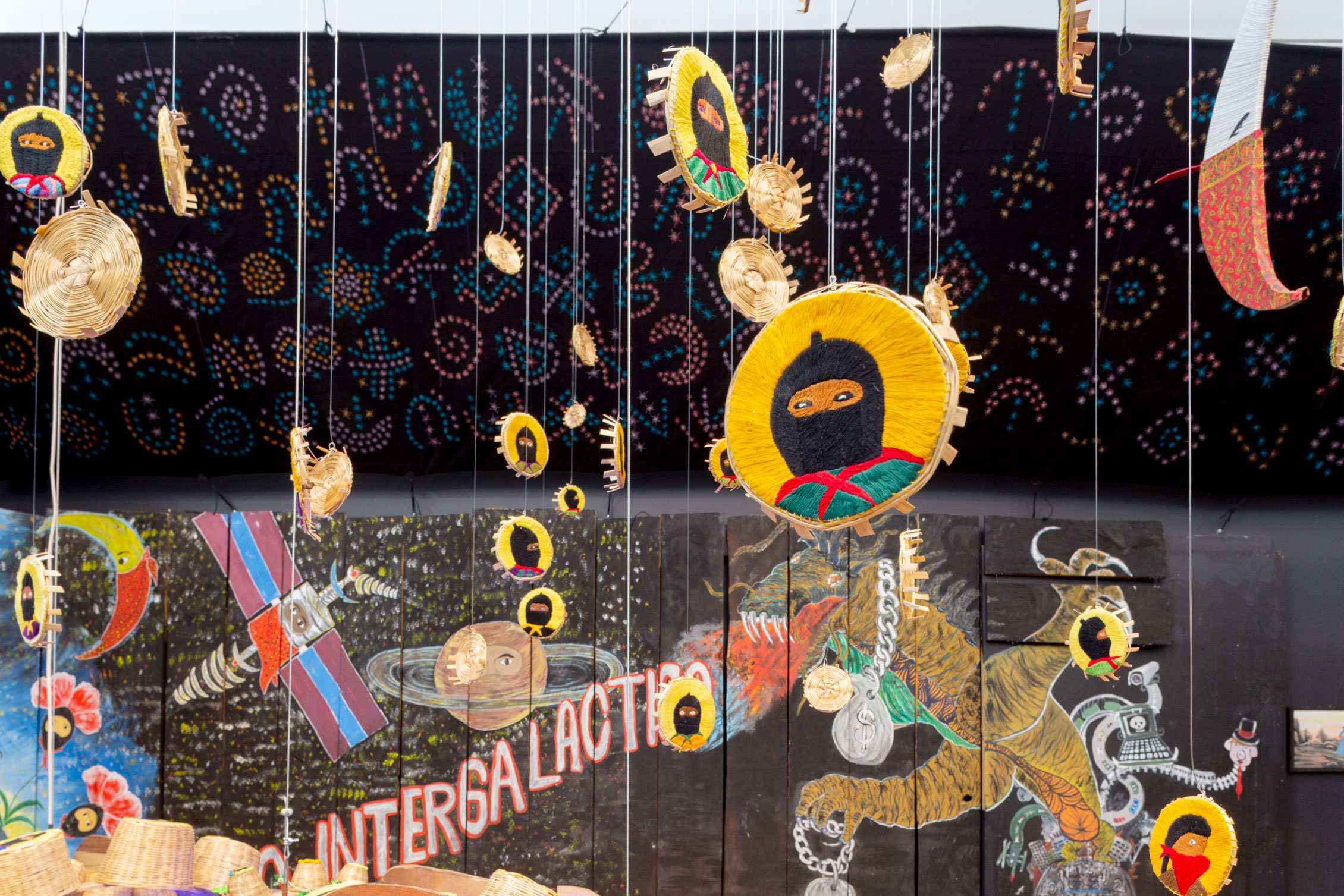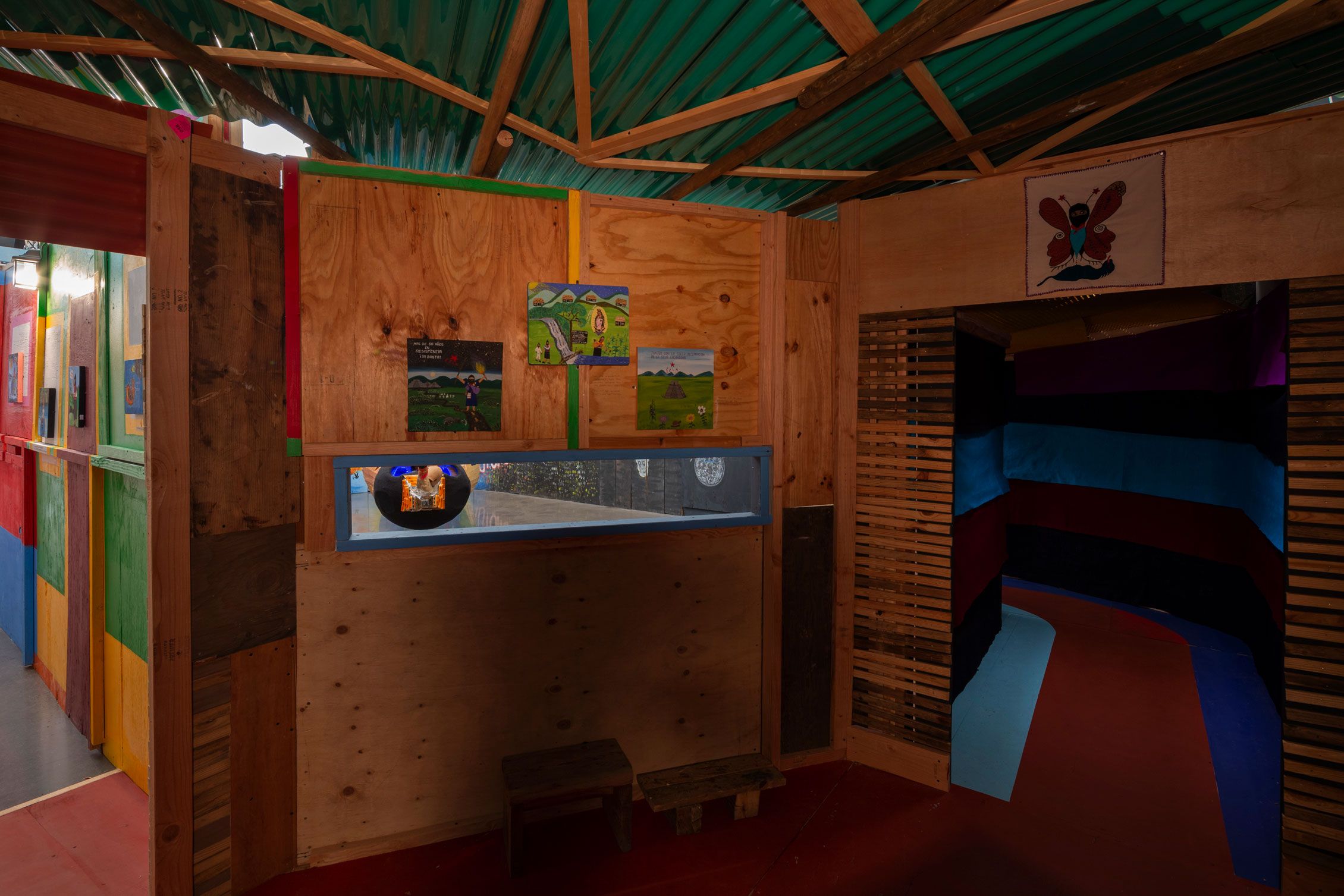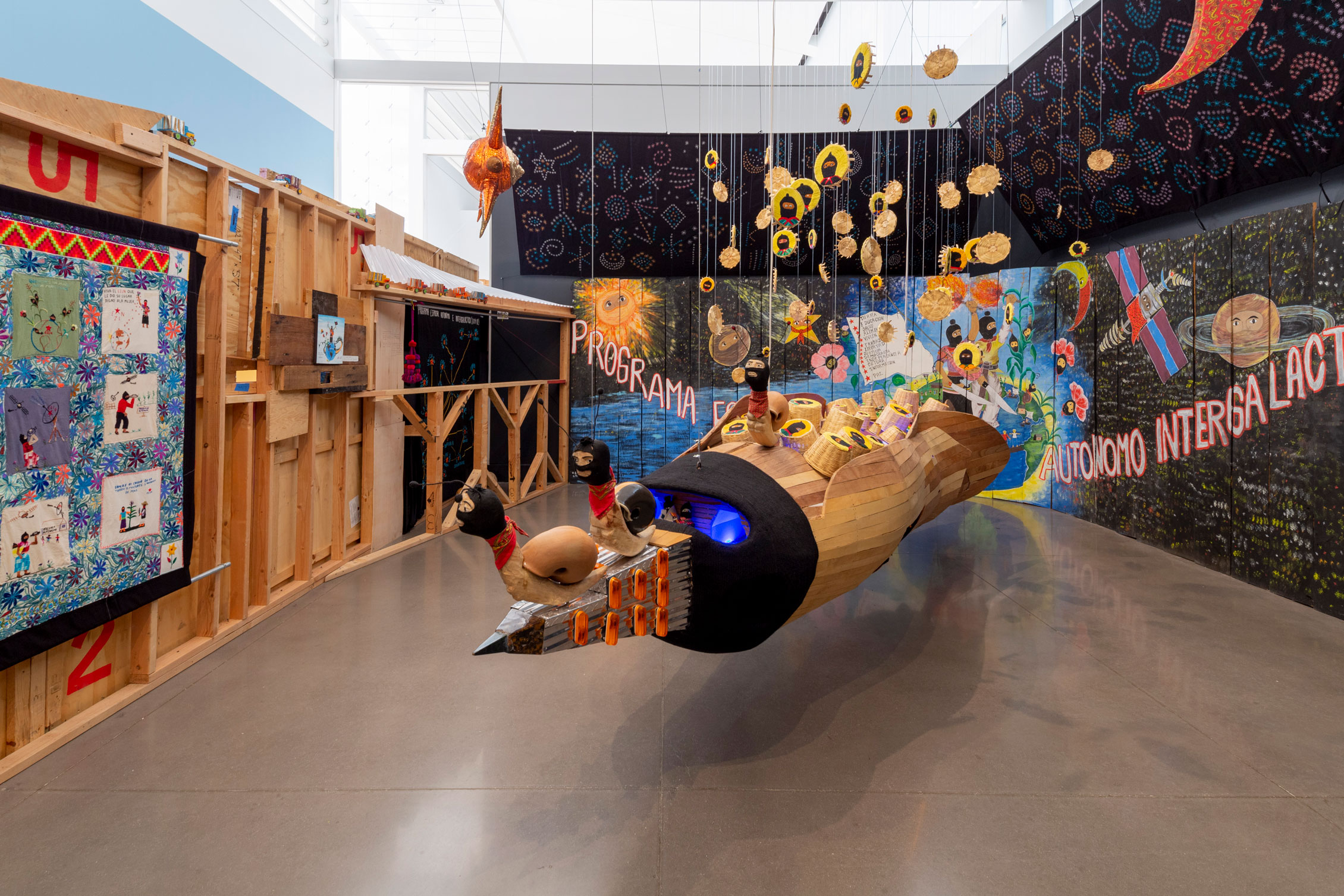
Outside the Queens Museum in Corona Park stands the massive steel Unisphere model of the Earth. Inside, a large mural of the Unisphere above the Zapatista slogan “We want a world within which many worlds fit” marks the entrance to artist Rigo 23’s Autonomous InterGalactic Space Program (2009–ongoing) project.
Mexico’s Zapatista Army of National Liberation is a far-left political and militant group that holds a fair amount of territory in Chiapas, the country’s southernmost state, and draws much of its membership from indigenous Mayans, who want their rights and lands returned to them. Since their first Festival of Dignified Rage in 2009, Rigo (who hails from Madeira Island, Portugal, and now lives in San Francisco), has been collaborating with Zapatista painters, weavers, carpenters, singers and activists by asking them to imagine and help model a spaceship inspired by both their revolutionary politics and Mayan conceptions of the cosmos: the result, now on show for the first time in New York, is a colorfully painted planetarium at the heart of which hangs a giant corn spacecraft. Handknitted, teddy bear-sized, heavily armed insurgents are its pilots, while a crescent moon wearing a bandanna as a mask lights the way forward.

One of the paintings on the walls of the planetarium shows balaclava-clad Zapatistas holding flowers in the air. They’re gathered under a tree on which more Zapatistas grow like fruit, above the words, “Another World is Possible.” Another shows a child tending to some swans below a waterfall and the words, “No to neoliberalism. Stop privatization.” There’s also a tapestry of a soldier wielding a sword against a many-headed dragon representing the World Trade Organization, the “Monstruo Capitalista”; it’s surprising to see such explicit anti-neoliberal propaganda here in the Queens Museum building, which once housed the United Nations General Assembly and also two World Fairs. As art critic Roberta Smith recently observed, “Subject matter is the new form.” Art has become very literal lately, and I don’t think this is a good thing. But if we’re going to be didactic, here’s a good model for doing so: one that combines community-oriented folk art with radical politics to make something that’s at the same time playful, joyful and militantly hardcore.

Before leaving the museum, I take a walk down around its Panorama, a vast model of New York’s five boroughs that was built for the World’s Fair in 1964 and features nearly a million tiny buildings. “On the day I had seen the Panorama,” writes Teju Cole in his autobiographical novel Open City (2011), “I had been impressed by the many fine details it presented: the rivulets of roads snaking across a velvety Central Park, the boomerang of the Bronx curving up to the north, the elegant beige spire of the Empire State Building, the white tablets of the Brooklyn piers, and the pair of gray blocks on the southern tip of Manhattan, each about a foot high, representing the persistence, in the model, of the World Trade Center towers, which, in reality, had already been destroyed.” These model towers are still there today, and will likely never be replaced, but the fake skies above New York now have another addition: hanging from the ceiling somewhere over the painted Hudson, waiting for its moment, a small corn-shaped craft made by Rigo’s collaborators Simona Gomez Lopez, Monserrat Lopez Blanco and Santiago Marcial and named the ISS Ramona 1.
“Mundos Alternos: Art and Science Fiction in the Americas” is at the Queens Museum until August 18.










 in your life?
in your life?

